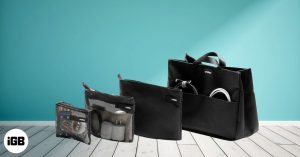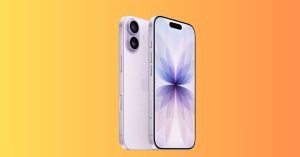LG G3 review: the best phablet to date
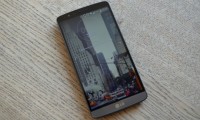
LG’s latest smartphone is a 5.5in powerhouse with a quad-HD screen and seems to be a hit with customers.
From its release at the end of May, the G3 outpaced its Korean rival theSamsung Galaxy S5 three-to-one in its home market, and contributed to LG’s 14.5m smartphone sales in the second quarter – ending three consecutive loss-making quarters for that division. Analysts arepredicting sales of more than 10m. It might not sound much compared with Samsung’s 40m-plus sales for its latest Galaxy S flagships, but is a significant boost over last year’s LG’s G2, which sold around 3m to 4m.
Samsung is due to release the new Galaxy Note 4 phablet next week at the IFA electronics tradeshow in Berlin, but has the G3 given Samsung something to worry about?
Verdict – big, powerful and almost manageable
LG’s G3 is the best big-screened phone to date: the very small bezels around the screen and curved plastic back make its 5.5in screen eminently useable. The even weight distribution made me confident about using it in one hand, although it may still be too big for some people.
The quad HD screen sounds great in a specification list – 534 pixels per inch! – but doesn’t actually look noticeably different from smaller full HD screens such as the Galaxy S5’s 5.1in screen. The pixels aren’t visible in suitably-written apps; what is there beyond invisibility?
The camera is slightly disappointing: in low light settings, the shots are fuzzy, but its laser autofocus works quickly to acquire subjects, and shots in daylight are detailed, with accurate colour.
The G3 is still a little bit too big for my taste, but LG’s done a very good job of making a phablet useable with one hand in a way that rivals like the Samsung Galaxy Note series have not.
Deceptively plastic
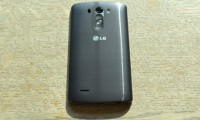
The shiny, brushed effect makes the G3’s plastic design looks deceptively like metal. It feels solid in the hand and the build quality is great – there’s minimal give or flex in the body. It weighs 149g, which is lighter than the 160g HTC One M8, but heavier than the 145g Galaxy S5and the significantly smaller 112g iPhone 5S.
The G3’s claim to fame is its 5.5in quad HD display, which at 2560×1440 resolution has a pixel density of 534 pixels per inch, far exceeding the 432ppi of the Galaxy S5 and similar rivals. The screen is vibrant and crisp with wide viewing angles, but the extra pixel density is not noticeable in general use compared to, say, a Galaxy S5.
Specs
- Screen: 5.5in quad HD LCD
- Processor: 2.5 GHz quad-core Qualcomm Snapdragon 801
- RAM: 2GB of RAM
- Storage: 16GB
- Operating system: Android 4.4 “Kitkat”
- Camera: 13MP rear camera with laser autofocus, 2.1MP front-facing camera
- Connectivity: LTE, Wi-Fi, NFC, Bluetooth 4.0 with BLE, wireless charging and GPS
- Dimensions: 146.3 x 74.6 x 8.9mm
- Weight: 149g
Solid day’s use despite the screen
The UK version of the LG G3 has much the same hardware as rivals. The quad-core Snapdragon 801 processor is powerful enough to handle any current app, game or function, with no perceptible lag.
A microSD card slot adds to the 16GB of storage available for movies, music and photos, but a 32GB version is also available in some countries outside of the UK.
I managed one and a half days of intense usage before the battery ran out, with push email running all day, music streaming over Bluetooth for three hours, two hours of web browsing and 30 minutes of 3D gaming, which the G3 powered through without issue.
A battery saver mode is also available extending standby time by turning off functions like Wi-Fi, push notifications and haptic feedback (where the phone vibrates).
Tap to unlock
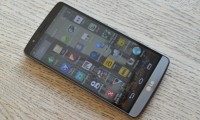
LG’s smartphone software has been poor in the past, but the G3’s customised Android is much improved.
It closely resembles standard Android, which is a good thing, with a few small useful additions and a pastel colour scheme. The small battery meter that appears in the status bar when connecting Bluetooth headphones or speakers, showing the amount of charge left in the connected device, is particularly useful.
There’s a one-handed operation feature that moves the keyboard and other elements to one side, effectively reducing the screen size; I found it wasn’t needed because the phone is almost the same size as the screen.
There’s also a multi-window mode for putting more than one app on screen at a time. It’s fiddly to implement and I didn’t find it useful – as with Samsung’s implementation of the same idea. Even a phablet screen is too small to make this feature useful. Simply switching between apps is easy and quick, and allows use of the full screen, instead of struggling with two in restricted space.
One notable, and useful, added feature is the “Knock Code”. When the screen is locked, four to eight taps in sequence in four quadrants of the screen will unlock it, instead of a passcode. The taps can wake up the phone and instantly unlock it, without the screen being on, saving time.
Even if a knock code isn’t set, two quick taps will wake the screen. That relegates the power button (located, unusually, on the centre back of the phone, under the camera) essential only for powering on and off. The volume buttons bracket the power button, where an index finger normally rests when making a call.
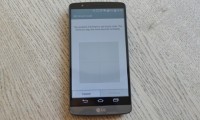
App incompatibility is a small downside for the G3. The quad HD screen isn’t (yet) officially supported by every app, making them unavailable from Google Play. Apps that won’t download from Play such as Jawbone’s Up do work when sideloaded from a PC, so it may be a case of developers needing to ready their apps for extra-high screen resolutions. This will probably get sorted out once more devices with the higher resolution screen get released such as the OnePlus One.
Camera: robot vacuum lasers for your pleasure
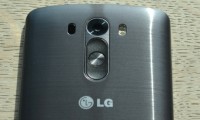
The selling point for the G3’s camera is its laser autofocus – reportedly pinched from the robot vacuum cleaners that LG also makes; they use it to scan ahead for obstacles.
The laser autofocus focuses quickly and accurately, but only in the main camera app. Some other apps such as Evernote have their own camera handler, which means they can’t access the laser focus. That means slow, out-of-focus shots via the standard flash and sharpness detection that most other cameras use.
Focused shots taken in solid lighting conditions look great, but are disappointingly noisy in low-light conditions – indoors at a wedding, for instance, where the optical image stabilisation could remove blurring due to image shake, but couldn’t gather more light.
Price
The LG G3 costs under £450 in either gold or black without a mobile phone contract – similar to the Galaxy S5 and other Android rivals.
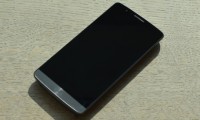
Pros: large 5.5in quad HD screen; shaped back makes it easier to hold; powerful processor; quick autofocus in camera app; clever knock code to unlock.
Cons: some apps not available; device may be too big for some; laser autofocus not available to all apps; poor camera in low light.




